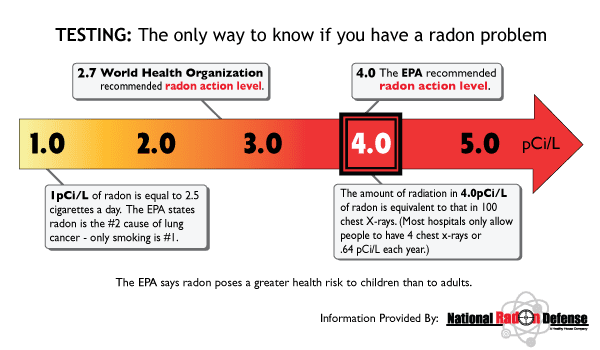 What is Radon and why should you care? According to the EPA:
What is Radon and why should you care? According to the EPA:Radon is a naturally-occurring, invisible and odorless radioactive gas. One in 15 American homes contains high levels of radon. Radon gas is not isolated to certain geographical areas or home types. Radon problems have been detected in homes in every county of the U.S. It caused more American fatalities last year than carbon monoxide, fires, and handguns combined! If a home hasn’t been tested for radon in the past two years, EPA and the Surgeon General urge you to take action.
As part of your home inspection, most single family house buyers get a radon test. There are two kinds of test devices: passive canister or continuous monitor test. The passive canisters can be bought at hardware stores all over the area or a home inspector can bring them and set them up, for a fee. Some of the hardware store brands have the lab fees included and some don’t, so read the package before buying. With my clients, I prefer these because the lab is in Massachusetts, so we get the results quickly and reliably.
The continuous monitor tests are more expensive, because you are renting the machine and using the tech’s time to set up and pick up. The up side is the machine can detect if windows have been opened, so you know that test conditions were done correctly. Also, with the machine, you get the readings almost right away. With canisters it takes a couple of days to get them to the lab for reading.
 I spoke to John Lugo at Eagle Environmental about testing. He told me that radon takes only 12 hours to get to its peak reading level. So, an accurate test can be achieved if a house is closed up for 12 hours before testing begins. The radon level does not get higher and higher the longer a house is closed up. So, if you get a high reading on an empty house, it is not a false positive.
I spoke to John Lugo at Eagle Environmental about testing. He told me that radon takes only 12 hours to get to its peak reading level. So, an accurate test can be achieved if a house is closed up for 12 hours before testing begins. The radon level does not get higher and higher the longer a house is closed up. So, if you get a high reading on an empty house, it is not a false positive.
To get a true test, make sure the windows are closed. You can get a false positive if the seller opens the windows during the test. . The way that the false positive happens is that if the open window increases the upward flow of air in the basement, then more radon will be detected. Canister tests can be fouled that way. The machine tests are sensitive to air pressure changes, so the technician can see if windows or doors were opened enough to invalidate the results. (You may also get a false negative.)
The EPA action level for Radon is 4.0 pci/l. If your results are below that, your basement has passed the test.

It provides actionable advice that helps potential buyers navigate the process of testing for radon effectively and understanding the implications for their future home’s safety.